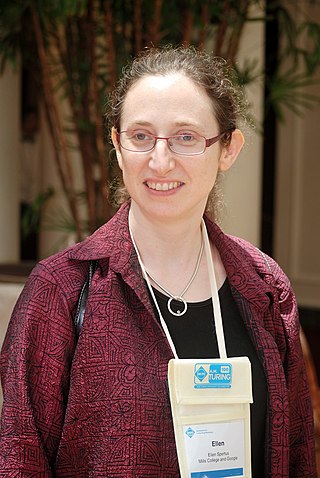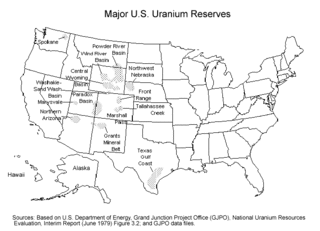Related Research Articles

Mining is the extraction of valuable geological materials from the Earth and other astronomical objects. Mining is required to obtain most materials that cannot be grown through agricultural processes, or feasibly created artificially in a laboratory or factory. Ores recovered by mining include metals, coal, oil shale, gemstones, limestone, chalk, dimension stone, rock salt, potash, gravel, and clay. Ore must be a rock or mineral that contains valuable constituent, can be extracted or mined and sold for profit. Mining in a wider sense includes extraction of any non-renewable resource such as petroleum, natural gas, or even water.

The Keweenaw Peninsula is the northernmost part of Michigan's Upper Peninsula. It projects into Lake Superior and was the site of the first copper boom in the United States, leading to its moniker of "Copper Country." As of the 2000 census, its population was roughly 43,200. Its major industries are now logging and tourism, as well as jobs related to Michigan Technological University and Finlandia University.

Ellen R. Spertus is an American computer scientist who is currently the Elinor Kilgore Snyder Professor of computer science at Mills College, Oakland, California, and a former senior research scientist at Google.

The Royal College of Science for Ireland (RCScI) was an institute for higher education in Dublin which existed from 1867 to 1926, specialising in physical sciences and applied science. It was originally based on St. Stephen's Green, moving in 1911 to a purpose-built "Royal College of Science" building on Merrion Street, now known as Government Buildings. In 1926 it was absorbed into University College Dublin (UCD) as the faculty of Science and Engineering.

The University of Jordan, often abbreviated UJ, is a public university located in Amman, Jordan. It was founded in 1962 by royal decree, and it is the largest and oldest institution of higher education in Jordan. It is located in the capital Amman in the Jubaiha area of the University District. It is composed of 20 faculties, and it contains over 95 departments.The main strategy and rule for the university is to be global and productive in all the educational fields of it.

The Institute of Materials, Minerals and Mining (IOM3) is a UK engineering institution whose activities encompass the whole materials cycle, from exploration and extraction, through characterisation, processing, forming, finishing and application, to product recycling and land reuse. It exists to promote and develop all aspects of materials science and engineering, geology, mining and associated technologies, mineral and petroleum engineering and extraction metallurgy, as a leading authority in the worldwide materials and mining community.

Mining in Iran is still under development, yet the country is one of the most important mineral producers in the world, ranked among 15 major mineral-rich countries, holding some 68 types of minerals, 37 billion tonnes of proven reserves and more than 57 billion tonnes of potential reserves worth $770 billion in 2014. Mineral production contributes only 0.6 per cent to the country's GDP. Add other mining-related industries and this figure increases to just four per cent (2005). Many factors have contributed to this, namely lack of suitable infrastructure, legal barriers, exploration difficulties, and government control.

Karnataka is one of the highest economic growth states in India with an expected GSDP growth of 9.5% in the 2021–22 fiscal year. The total expected GSDP of Karnataka in 2022–2023 is about $240 billion. Karnataka recorded the highest growth rates in terms of GDP and per capita GDP in the last decade compared to other states. In 2008–09, the tertiary sector contributed the most to GSDP, followed by the secondary sector, and the primary sector.

The University of Mines and Technology (UMaT) is a public university located at Tarkwa in the Western Region of Ghana.

Uranium mining in the United States produced 173,875 pounds (78.9 tonnes) of U3O8 in 2019, 88% lower than the 2018 production of 1,447,945 pounds (656.8 tonnes) of U3O8 and the lowest US annual production since 1948. The 2019 production represents 0.3% of the anticipated uranium fuel requirements of the US's nuclear power reactors for the year.

The mining industry of the Democratic Republic of the Congo produces copper, diamonds, tantalum, tin, gold, and more than 63% of global cobalt production. Minerals and petroleum are central to the DRC's economy, making up more than 95% of value of its exports.

Copper mining in Arizona, a state of the United States, has been a major industry since the 19th century. In 2007, Arizona was the leading copper-producing state in the country, producing 750 thousand metric tons of copper, valued at $5.54 billion. Arizona's copper production was 60% of the total for the United States. Copper mining also produces gold and silver as byproducts. Byproduct molybdenum from copper mining makes Arizona the nation's second-largest producer of that metal. Although copper mineralization was found by the earliest Spanish explorers of Arizona, the territory was remote, and copper could seldom be profitably mined and shipped. Early Spanish, Mexican, and American prospectors searched for gold and silver, and ignored copper. It was not until the completion of the Southern Pacific Railroad in 1876 that copper became broadly economic to mine and ship to market.

Uranium mining in Utah, a state of the United States, has a history going back more than 100 years. Uranium mining started as a byproduct of vanadium mining about 1900, became a byproduct of radium mining about 1910, then back to a byproduct of vanadium when the radium price fell in the 1920s. Utah saw a uranium boom in the late 1940s and early 1950s, but uranium mining declined in the 1980s. Since 2001 there has been a revival of interest in uranium mining, as a result of higher uranium prices.

Mining in the United Kingdom produces a wide variety of fossil fuels, metals, and industrial minerals due to its complex geology. In 2013, there were over 2,000 active mines, quarries, and offshore drilling sites on the continental land mass of the United Kingdom producing £34bn of minerals and employing 36,000 people.

The CK-12 Foundation is a California-based non-profit organization which aims to increase access to low-cost K-12 education in the United States and abroad. CK-12 provides free and customizable K-12 open educational resources aligned to state curriculum standards. As of 2022, the foundation's tools were used by over 200,000,000 students worldwide.

According to a report by The Economist, Iran has been ranked 39th for producing $23 billion of industrial products in 2008. From 2008 to 2009 Iran has leaped to 28th place from 69th place in annual industrial production growth rate.
American Elements is a global manufacturer and distributor of advanced materials with a more than 35,000-page online product catalog and compendium of information on the chemical elements, advanced materials, and high technology applications. The company's headquarters and educational programs are based in Los Angeles, California. Its research and production facilities are located in Salt Lake City, Utah; Monterrey, Mexico; Baotou, China; and Manchester, UK.

Petr Savelyevich Chubik – Since 2008 Rector of Tomsk Polytechnic University. He is a specialist in drilling cleaning fluids. Vice-president of the Association for Engineering Education of Russia, Vice-President of the Association of Technical Universities, Chairman of the Association "Tomsk consortium of scientific, educational and research institutions", member of the International Academy of Science of Higher Education and the Russian Academy of Russian Engineering. Co-Chair of the Board of the Association Consortium of supporting universities of the State Corporation "Rosatom", a member of the Board of the Association of the leading universities of Russia, member of the advisory council to the deputy governor of Tomsk region on scientific, educational complex and innovation policy. Member of the party "United Russia".
Bhakta B. Rath is an Indian American material physicist and Head of the Materials Science and Component Technology of the United States Naval Research Laboratory (NRL), the corporate research laboratory for the United States Navy and the United States Marine Corps. He is the chief administrative officer for program planning, interdisciplinary coordination, supervision and control of research and is the associate director of research for Materials Science and Component Technology at NRL.
References
- ↑ Bahadur, Gaiutra (November 21, 2001). "Mineral industry's support keeps text alive". Austin American-Statesman (TX). Retrieved 2008-07-28.
- ↑ "MII Web site becomes a link for textbooks". Mining Engineering. October 1, 2006. Archived from the original on October 21, 2012. Retrieved 2008-07-28.
- "MII releases the Rock Odyssey educational program". Mining Engineering. July 1, 2002. Archived from the original on October 21, 2012. Retrieved 2008-07-28.
- "Ooh, baby.(minerals and metal consumption)(Brief Article)". The Concrete Producer. August 1, 2005. Archived from the original on October 21, 2012. Retrieved 2008-07-28.
- "The Mineral Information Institute. (philosophical debate in Texas on environmental science textbooks)". Pit & Quarry. 1 Dec 2001. Retrieved 2008-07-28.
- "Mineral Information Institute". Mining Engineering. April 1, 1999. Archived from the original on October 21, 2012. Retrieved 2008-07-28.